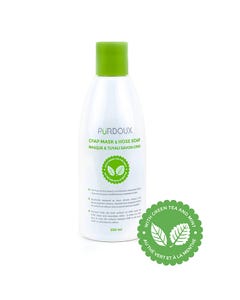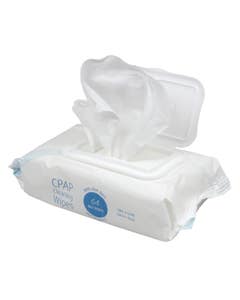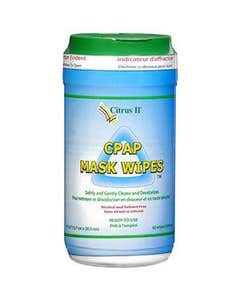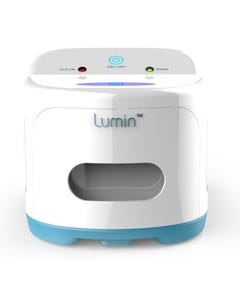How to Clean Your CPAP Mask, Hose & Supplies: A Complete Guide
Keeping it Clean: Your Essential Guide to Cleaning CPAP Masks and Accessories
Using your CPAP machine every night is key to treating sleep apnea, but just as important is keeping your equipment clean! Your mask, tubing, and humidifier chamber are exposed to moisture, warmth, skin oils, and bacteria. Proper CPAP mask cleaning is vital not only to maintain the performance and mask lifespan of your gear but also to prevent the buildup of germs that could lead to skin irritation or respiratory illness.
Don't worry – establishing a routine is simple. This guide provides step-by-step instructions for cleaning your CPAP mask, headgear, tubing, and humidifier, along with expert tips from The CPAP Shop.
Why Regular CPAP Cleaning is Crucial
Health First: Preventing Bacteria, Mold, and Illness
Your CPAP equipment, especially the humidifier chamber and mask cushion, creates a warm, moist environment where bacteria and mold can thrive. Regular cleaning prevents these microbes from multiplying and being inhaled, reducing your risk of sinus infections or other respiratory problems. Consistent mask hygiene also helps prevent acne breakouts and skin irritation.
Maintaining Equipment Performance and Lifespan
Facial oils and dirt buildup can degrade mask cushions (silicone, gel, etc.), causing them to lose their seal and leading to leaks. Proper CPAP cleaning helps extend the mask lifespan and ensures your therapy remains effective.
Your Recommended CPAP Cleaning Schedule
Consistency is key. Here’s a typical routine:
- Daily:
- Mask Cushion: Wipe down the cushion where it contacts your face. This removes oils and sweat.
- Humidifier Chamber (if used): Empty any remaining water, rinse thoroughly, and let it air dry completely. Refill with fresh distilled water only before use.
- Weekly:
- Full Mask System (Cushion, Frame, Elbow): Disassemble and wash thoroughly.
- Headgear: Wash to remove oils and sweat.
- CPAP Tubing/Hose: Wash inside and out.
- Reusable Filter (if applicable): Rinse according to manufacturer instructions. (Disposable filters should be replaced, not washed).
- Humidifier Chamber: Wash thoroughly (and disinfect if recommended by manufacturer).
While weekly full cleaning is ideal, many users find success by establishing a consistent routine that fits their schedule. Some deep clean every weekend, others rotate components. The non-negotiable part is the daily cushion wipe-down and regular humidifier care. Find what works for you, but don't skip the basics!
Step-by-Step Guide to Washing Your CPAP Equipment
This manual method is the universally recommended approach:
- Disassemble: Take apart your mask (cushion, frame, elbow, headgear) and detach the tubing from the mask and machine.
- Prepare Solution: Fill a clean basin or sink with warm (not hot) water and add a small amount of appropriate cleaning supplies.
- Recommended: Use mild soap specifically designed for CPAP equipment (like Purdoux CPAP Soap or LiViliti Soap) or a very gentle, unscented dish soap. Avoid antibacterial soaps, bleach, alcohol, or strongly scented detergents.
- Optional Disinfecting Boost: You can add distilled white vinegar (typically 1 part vinegar to 3-4 parts water) to the soapy water for extra disinfecting, or do a separate vinegar soak weekly for the humidifier chamber as recommended in our blog post.
- Wash Components:
- Mask Parts (Cushion, Frame, Elbow): Submerge and gently swirl or hand-wash components. Use a soft brush (like the Snugell CPAP Tube Cleaning Brush), which often includes a mask brush) to carefully clean vents and crevices. CPAP cleaning requires gentleness – don't scrub harshly.
- Tubing/Hose: Swish the tubing vigorously in the soapy water, ensuring water flows through the inside. A long, flexible tube brush can help clean the interior effectively.
- Headgear: Gently hand-wash. Avoid harsh scrubbing that could stretch or damage the fabric or Velcro.
- Rinse Thoroughly: Rinse all components under clean, running water until all soap residue (and vinegar scent, if used) is gone. This is crucial to prevent irritation.
- Air Dry Completely: Shake off excess water. Place components on a clean towel or hang them (using a CPAP Hose Hanger for tubing is helpful) in an area out of direct sunlight. Allow everything to air dry completely before reassembling – usually several hours or overnight. Using damp equipment can promote mold growth.
- Quick Daily Cleaning: For the daily cushion wipe-down, specialized CPAP wipes (like Citrus II Wipes or Sunset Wipes) are convenient alternatives to soap and water.
Expert Cleaning Tips & Considerations
Always Use Distilled Water in Humidifier:
Tap water contains minerals that can build up in the chamber and potentially be aerosolized. Using distilled water prevents this. Consider a system like the EZ Distilled Water Filter System if distilled water is hard to find.
Material-Specific Cleaning Advice:
- Silicone is a common material used in CPAP products. That's because it is durable but can be damaged by harsh chemicals. While silicone is soft and flexible, it is prone to oil and residue build-up so proper cleaning is vital to overall CPAP success.
- Gel cushions may require careful handling to avoid punctures.
- Memory foam cushions (like AirTouch F20) usually require wiping only – check manufacturer instructions!
- Fabric components (headgear, some liners, chin straps) are stretchy and moisture-absorbing, but should never go in a dryer as they may shrink. Although allowing it to airdry (out of direct sunlight) may take longer, it is the best approach.
- Foam filters are typically reusable, but are delicate, so it's important to be careful when washing them. After rinsing the filter, allow it to airdry and avoid wringling or twisting it to not damage it.
- Disposable filters are typically made of a paper-like material and should be not washed. Rather, it should be replaced every 2-4 weeks or sooner if visibily worn out, dirty, or damaged.
Troubleshooting Cleaning Issues:
- Lingering odors in tubing? Try a vinegar soak.
- White film on cushion? Likely soap residue – rinse more thoroughly.
- Headgear losing elasticity? Ensure you're handwashing gently and not over-stretching when wet.
- Experiencing skin irritation or breakouts? Clean your cushion after every use and consider hypoallergenic mask liners.
- Cloudy or discolored water chamber? Make sure to only use distilled water in the chamber. If it hasn't been replaced
Cleaning vs. Sanitizing: Understanding UV and Ozone Devices
Manual cleaning physically removes dirt, oils, and germs. Sanitizing devices aim to kill remaining microbes.
- UV Sanitizers: Devices like the React Health Lumin or LiViliti PAPTIZER use UV-C light to kill bacteria and mold on the surface of masks and accessories quickly, often in minutes. They are generally considered safe for materials and ozone-free.
- Ozone Sanitizers: Devices like the SoClean (for which we carry accessories like filters/adapters) use activated oxygen (ozone). Important Note: The FDA has issued warnings regarding ozone CPAP cleaners, stating they have not been FDA approved or cleared and may damage CPAP components or cause respiratory irritation if ozone lingers.
- Recommendation: Manual cleaning as described above remains the gold standard recommended by manufacturers and the FDA. UV sanitizers can be a supplemental step for microbial reduction after cleaning, but do not replace manual washing to remove physical debris. Always follow device instructions carefully. Consult the FDA website for their latest guidance on CPAP cleaning devices.
Make Cleaning Part of Your Routine
Regular CPAP mask cleaning is a small investment of time that pays big dividends in therapy effectiveness, equipment longevity, and your personal health. Explore cleaning supplies like specialized soaps, wipes, and brushes available at The CPAP Shop to make the process easier. Stick to your schedule, and breathe easy knowing your equipment is clean and safe! If you'd like more information or assistance purchasing any of these products, give our expert staff a call at 866-414-9700 today.












